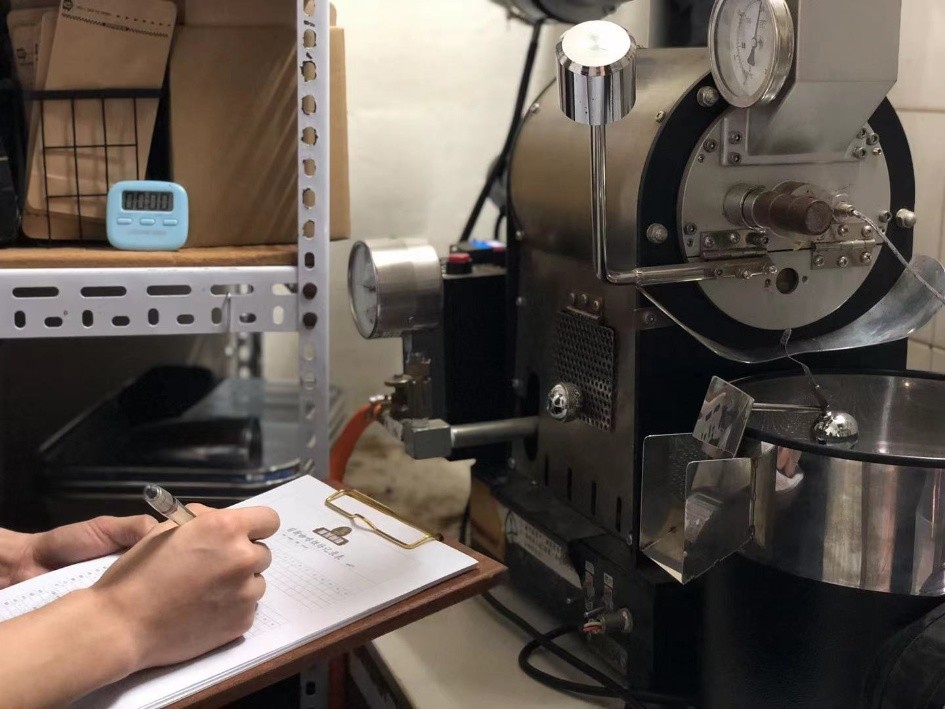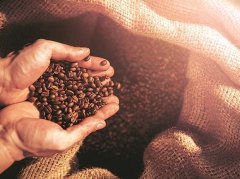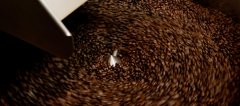Why do coffee beans produce oil? roast coffee beans? what do you mean by two explosions? how to judge the tipping point?
Roasting coffee beans is really a magical thing: throw some humble green seeds into a hot environment, and in less than 15 minutes (or about), they will become magical beans, grind and add some hot water to become a delicious and healthy coffee drink. If we think about it carefully, we will know that a lot of changes have taken place inside the coffee beans in this process. Although there are many things that can "surface" from the inside of the seed's potential, one of the more obvious is oil: you may have noticed that some coffee beans look shiny or smooth, as if coated with melted butter. The oily residue is a startling reminder that these beans are actually seeds-just like the sunflowers and sesame seeds we use to make cooking oil.

First of all, let's talk about what this oil is.
Coffee seeds contain fats or fat-like lipids, mainly triglycerides, tocopherols and sterols-all of which are also found in vegetable oils-which account for 17% of the seed composition. Most of this so-called "coffee oil" is stored inside the seeds, where it can be used as nutrition during seedling germination. The eyes or touch of raw coffee is not greasy at all: these lipids begin to ooze only through the baking process.
Why?

Roasting coffee affects cellulose, or the tough wood that makes up the main structure of beans. Inside the cellulose are all the flavor compounds, alkaloids and, yes, oil, which make high-quality coffee in this way. When the cellulose is heated in the roaster, it begins to degrade and becomes more porous, which causes the oil to ooze. The deeper the roasting of the coffee, the more pores in the cellulose and then the more oil on the surface of the coffee when it is heated directly.
Coffee roasting in stages to understand the oil, it is helpful to understand the two later stages of the process: the first explosion and the second explosion, both named after the sound of the coffee and the actual situation inside the coffee beans. Part of the reason for the explosion is that the heat in the roaster pressurizes the water inside the seed and turns it into steam: once the pressure is high enough, it squeezes out of the cellulose, causing it to burst or burst to escape. If the beans continue to be heated after the first burst, the gas pressure inside the seeds will continue to increase, and eventually they will burst out of the more degraded cellulose, making a secondary, quieter "snap" sound-a second crack. The second explosion is also the point where the cellulose is porous enough to allow some oil to pass through, although all coffee will eventually release oil after roasting if it is kept long enough.
Important Notice :
前街咖啡 FrontStreet Coffee has moved to new addredd:
FrontStreet Coffee Address: 315,Donghua East Road,GuangZhou
Tel:020 38364473
- Prev

Where to buy raw coffee beans how to import the United States, Britain, America, Brazil coffee beans export development story
Coffee is more than just a stimulant and a concentration aid. Although in a society where we are addicted to work, these factors do help. People stop for a cup of coffee and understand what's going on.
- Next

Is the coffee more fresh and delicious? Do oiled coffee beans have more calories? is it suitable for Italian hand flushing?
Is the coffee bean oil more fresh and delicious? Do oiled coffee beans have more calories? is it more suitable for Italian style or hand flushing? Let Qianjie answer your questions and questions today. Myth 1: oiled coffee is more fresh. Equating oily with fresh seems like a smart way to bake coffee, doesn't it? When beans have that luster, they look very shiny and sexy
Related
- Detailed explanation of Jadeite planting Land in Panamanian Jadeite Manor introduction to the grading system of Jadeite competitive bidding, Red bid, Green bid and Rose Summer
- Story of Coffee planting in Brenka region of Costa Rica Stonehenge Manor anaerobic heavy honey treatment of flavor mouth
- What's on the barrel of Blue Mountain Coffee beans?
- Can American coffee also pull flowers? How to use hot American style to pull out a good-looking pattern?
- Can you make a cold extract with coffee beans? What is the right proportion for cold-extracted coffee formula?
- Indonesian PWN Gold Mandrine Coffee Origin Features Flavor How to Chong? Mandolin coffee is American.
- A brief introduction to the flavor characteristics of Brazilian yellow bourbon coffee beans
- What is the effect of different water quality on the flavor of cold-extracted coffee? What kind of water is best for brewing coffee?
- Why do you think of Rose Summer whenever you mention Panamanian coffee?
- Introduction to the characteristics of authentic blue mountain coffee bean producing areas? What is the CIB Coffee Authority in Jamaica?

